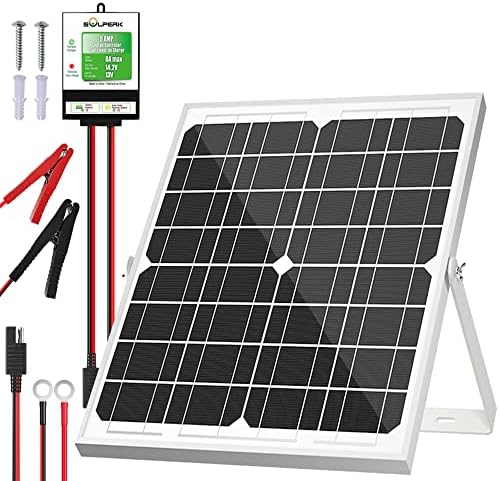# Solar Panel Prices in 2023: Trends, Discounts, and What to Budget For
Imagine waking up each morning to the soft glow of sunlight streaming through your window, knowing that the energy powering your home comes from the sun—completely free and clean. This realization isn’t just a futuristic dream; it’s a reality for many homeowners today, particularly those looking to live sustainably and reduce their energy bills. As solar energy continues to grow in popularity, understanding solar panel prices in 2023 is essential for anyone considering making the switch. Let’s dive into the trends, discounts, and budgeting strategies to empower your solar journey this year.
## Current Trends in Solar Panel Pricing
### A Steady Decline in Prices
Over the past decade, the cost of solar panels has seen a remarkable decline. In 2023, the average price for a solar photovoltaic (PV) system is approximately $2.77 per watt, down from $3.61 in 2014. This drop in price is primarily driven by advancements in technology, increased competition among manufacturers, and economies of scale in production.
### The Impact of Technological Innovation
The solar panel market is continually evolving, with new, more efficient models hitting the shelves regularly. A record efficiency of over 22% is now achievable with some of the latest technology, translating into more energy and savings for homeowners. Higher efficiency means you’ll require fewer panels to meet your energy needs, ultimately reducing installation costs.
### Module Choice: Monocrystalline vs. Polycrystalline
Homeowners can choose between monocrystalline and polycrystalline panels, each with its own pricing nuances. Monocrystalline panels, known for their superior efficiency and sleek appearance, usually range from $3 to $4 per watt. In contrast, polycrystalline panels, which are slightly less efficient but more budget-friendly, typically cost between $2 to $3 per watt. Understanding these differences can help you make more informed choices based on your budget and energy needs.
## Discounts and Incentives to Take Advantage Of
### Federal Tax Credits
One of the major perks of installing solar panels is the federal solar tax credit (ITC). In 2023, eligible solar panel installations can take advantage of a 30% tax credit, providing a significant reduction in upfront costs. However, this credit is scheduled to decrease to 26% in 2024, so timing your installation can yield substantial savings.
### State and Local Incentives
Many states also offer their own incentives for solar installation, including rebates, local tax credits, and performance-based incentives. For instance, states like California, New York, and Massachusetts have robust solar programs that can further reduce costs. Check your state’s solar energy association or the Database of State Incentives for Renewables & Efficiency (DSIRE) for more specific information.
### Utility Company Programs
Another great avenue to explore is your local utility company’s solar program. Some utilities offer rebates or incentives for installing solar panels. Others may have net metering policies that allow you to sell excess energy back to the grid, further offsetting costs.
## Budgeting for Solar Panels in 2023
### Factors to Consider
Before jumping into your solar panel adventure, it’s important to consider several factors that contribute to your total budget:
– **Size of Your System:** The average residential system typically ranges from 5kW to 10kW. Knowing your energy consumption and needs will help in determining the size of the system you require.
– **Installation Costs:** Installation costs can vary significantly based on your location, roof type, and whether you choose to go DIY or hire professionals. Typically, installation can account for 10-20% of your overall solar panel cost.
– **Warranty and Lifespan:** Most solar panels come with a warranty of 25 years or more. Investing in a reliable brand can save you money in the long run, as high-quality panels often lead to lower maintenance costs.
### Setting a Realistic Budget
To set a realistic budget for solar panel installation in 2023, consider the following steps:
1. **Research Costs:** Get quotes from multiple solar installers and compare the costs, warranties, and equipment offered.
2. **Incorporate Incentives:** Don’t forget to factor in any tax credits or local/state incentives when calculating your costs.
3. **Plan for Additional Expenses:** Budget for potential additional costs, such as installing a new roof or incorporating battery storage for energy independence.
4. **Update Your Energy Usage:** Analyze your past utility bills to understand your energy consumption patterns, guiding your solar energy demands.
## Pro Tips for Going Solar
Here are some additional tips to maximize your solar experience and savings:
1. **Shop Around:** Take time to compare quotes from multiple installers. Prices can vary greatly, and obtaining several quotes can enhance your negotiating power.
2. **Look for Seasonal Promotions:** Many companies offer seasonal discounts or promotional financing options, especially during the spring and summer months when solar installations peak.
3. **Consider DIY Installation:** If you’re handy and familiar with electrical work, some homeowners opt for DIY solar panel kits to save on installation costs. Just be cautious and ensure you adhere to local regulations.
4. **Monitor Incentives:** Keep an eye on local and federal incentives, as they can change frequently. Signing up for newsletters or alerts can help you stay informed.
5. **Plan for Maintenance:** After installation, maintain your solar system by keeping the panels clean and getting periodic inspections to ensure optimal performance.
## Final Thoughts
Solar panel prices in 2023 reflect an exciting time in renewable energy, with advancements making sun power more accessible than ever. By educating yourself on current trends, utilizing available discounts, and planning wisely for your budget, you’ll be well on your way to thriving in your sustainable energy journey.
Living off the grid with solar energy doesn’t have to be a dream; it’s a tangible reality that contributes to both personal and environmental well-being. So grab that sunshine and bask in the benefits that come with going solar!
Whether you’re just starting or deep into your solar journey, keep in mind that the sun is more than just a bright ball in the sky; it’s a golden opportunity for a more sustainable and budget-friendly future. Shine on!



